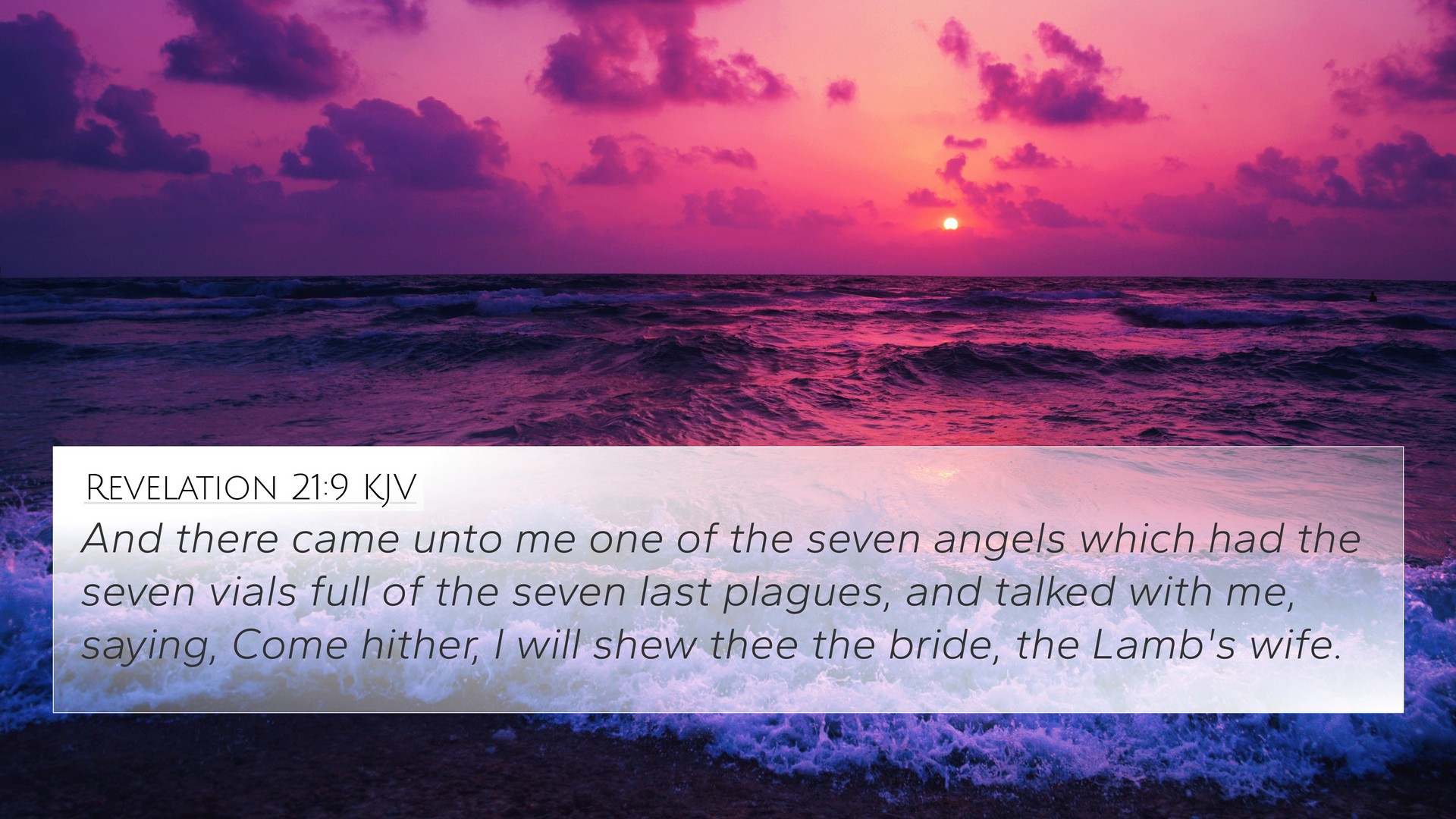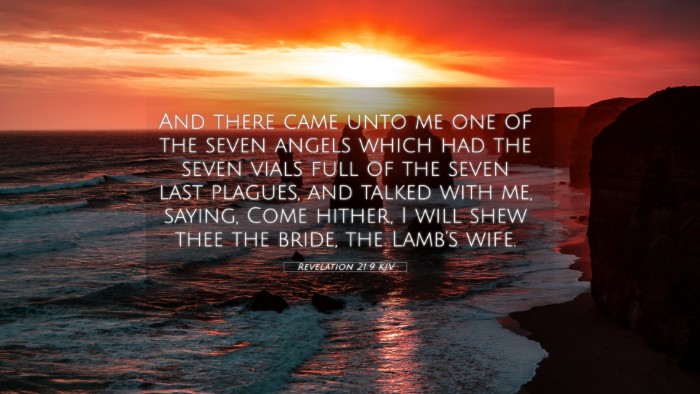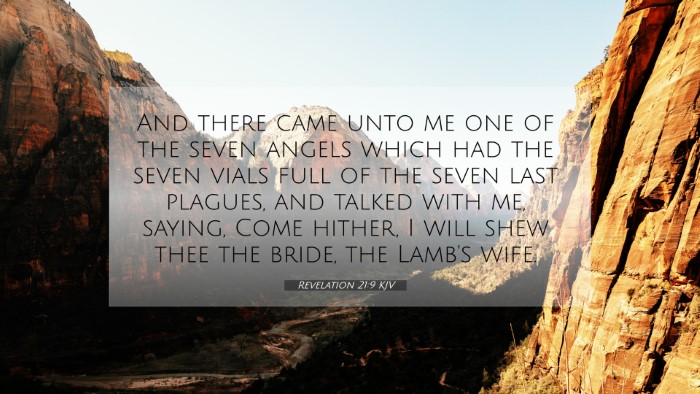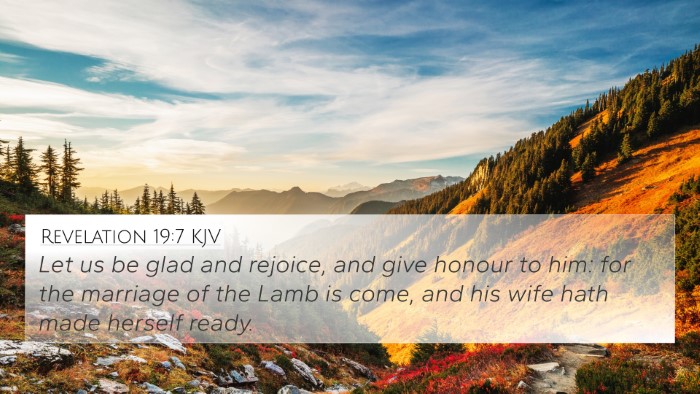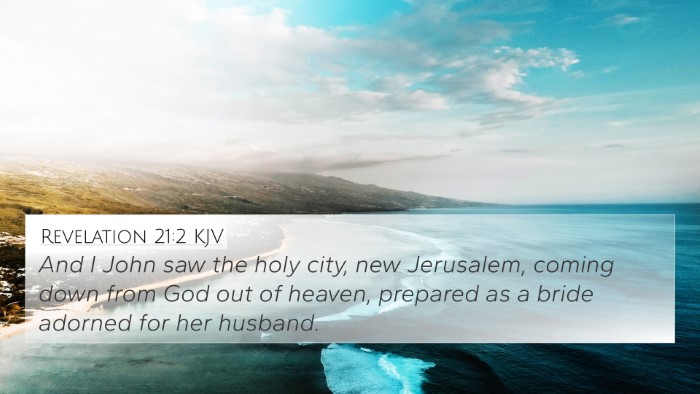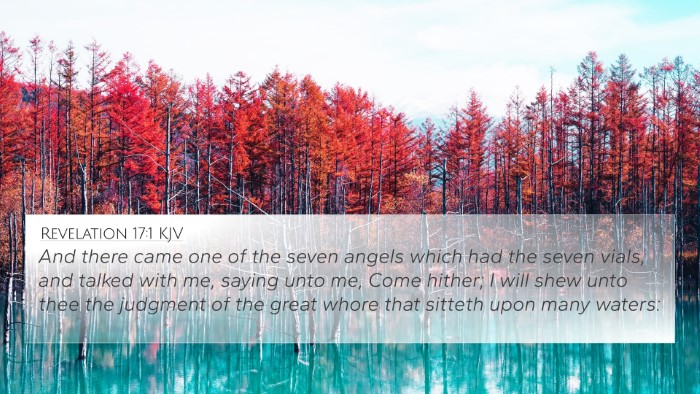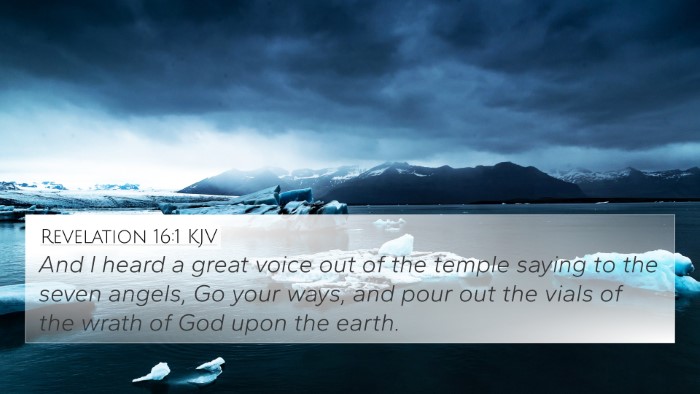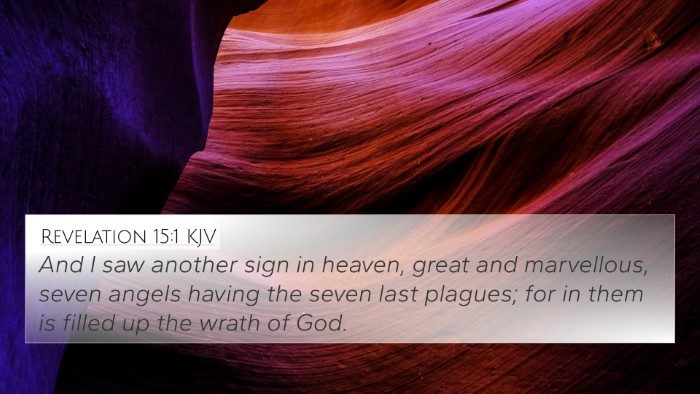Meaning and Interpretation of Revelation 21:9
Revelation 21:9 states:
"Then came one of the seven angels who had the seven bowls full of the seven last plagues and spoke to me, saying, ‘Come, I will show you the bride, the wife of the Lamb.’”
Overview of Revelation 21:9
This verse is part of a larger vision that unfolds in the book of Revelation. It introduces the imagery of the bride, interpreted as the Church or the people of God, united with Christ, referred to as the Lamb. This segment of the vision represents a culmination of God’s redemptive plan, showcasing the relationship between Christ and His followers.
Commentary Insights
-
Matthew Henry:
Henry emphasizes the significance of the bride's identity – the Church, which is adorned and prepared for her union with Christ. He outlines how this imagery illustrates both the glory of the Church and the closeness of the relationship between Christ and His believers.
-
Albert Barnes:
Barnes notes that the angel's invitation to witness this vision signifies the importance of the Church in the grand narrative of salvation. He discusses the symbolism behind the 'bride' being shown to John, stressing the purity and completeness of the Church's relation to Christ.
-
Adam Clarke:
Clarke delves into the historical context of the Church's evolution, explaining how throughout the scriptures, the Church is portrayed as the bride of Christ. This relationship symbolizes a deep, intimate bond forged through the sacrificial love of Christ.
Bible Verse Cross-References
Revelation 21:9 can be cross-referenced with the following Bible verses, illustrating thematic connections and reinforcing the concept of the Church as the bride:
- Ephesians 5:25-27: "Husbands, love your wives, as Christ loved the church and gave himself up for her." This passage highlights the sacrificial love that Christ has for His Church.
- 2 Corinthians 11:2: "For I feel a divine jealousy for you, since I betrothed you to one husband, to present you as a pure virgin to Christ." This verse emphasizes the purity of the Church as the bride.
- Isaiah 62:5: "For as a young man marries a young woman, so shall your sons marry you, and as the bridegroom rejoices over the bride, so shall your God rejoice over you." This Old Testament reference foreshadows the New Testament themes of marriage and union with God.
- Matthew 25:1-10: In the parable of the ten virgins, this text deals with readiness and anticipation for the bridegroom, reflecting themes of the Church awaiting Christ.
- Revelation 19:7: "Let us rejoice and exult and give him the glory, for the marriage of the Lamb has come, and his Bride has made herself ready." This verse is a direct reinforcement of the marriage imagery present in Revelation 21:9.
- John 3:29: "The bride belongs to the bridegroom." This highlights the relationship dynamic essential to understanding the Church's role as the Bride of Christ.
- Hebrews 12:22-23: "But you have come to Mt. Zion and to the city of the living God, the heavenly Jerusalem, and to an innumerable company of angels," indicating the ultimate gathering of the faithful as part of the Church's reality.
Thematic Connections
The imagery found in Revelation 21:9 encapsulates key Biblical themes such as:
-
The Unity of Christ and His Church:
The metaphor of marriage in scriptures illustrates the bond between Christ and the Church, one of mutual devotion and purpose.
-
Preparation and Purity:
The focus on the Bride being prepared emphasizes the necessity for the Church to uphold virtues of holiness and faithfulness in anticipation of Christ’s return.
-
Celebration of Redemption:
The unveiling of the bride also signifies the fulfillment of God’s promise and the joy of salvation, a recurring theme throughout scripture.
Conclusion
Revelation 21:9 acts as a pivotal point in understanding the relationship between Christ and His Church, effectively serving as a bridge between prophetic promises and their New Testament fulfillment. By exploring cross-references and related scriptures, readers can gain a deeper insight into the Biblical narrative's thematic richness.
